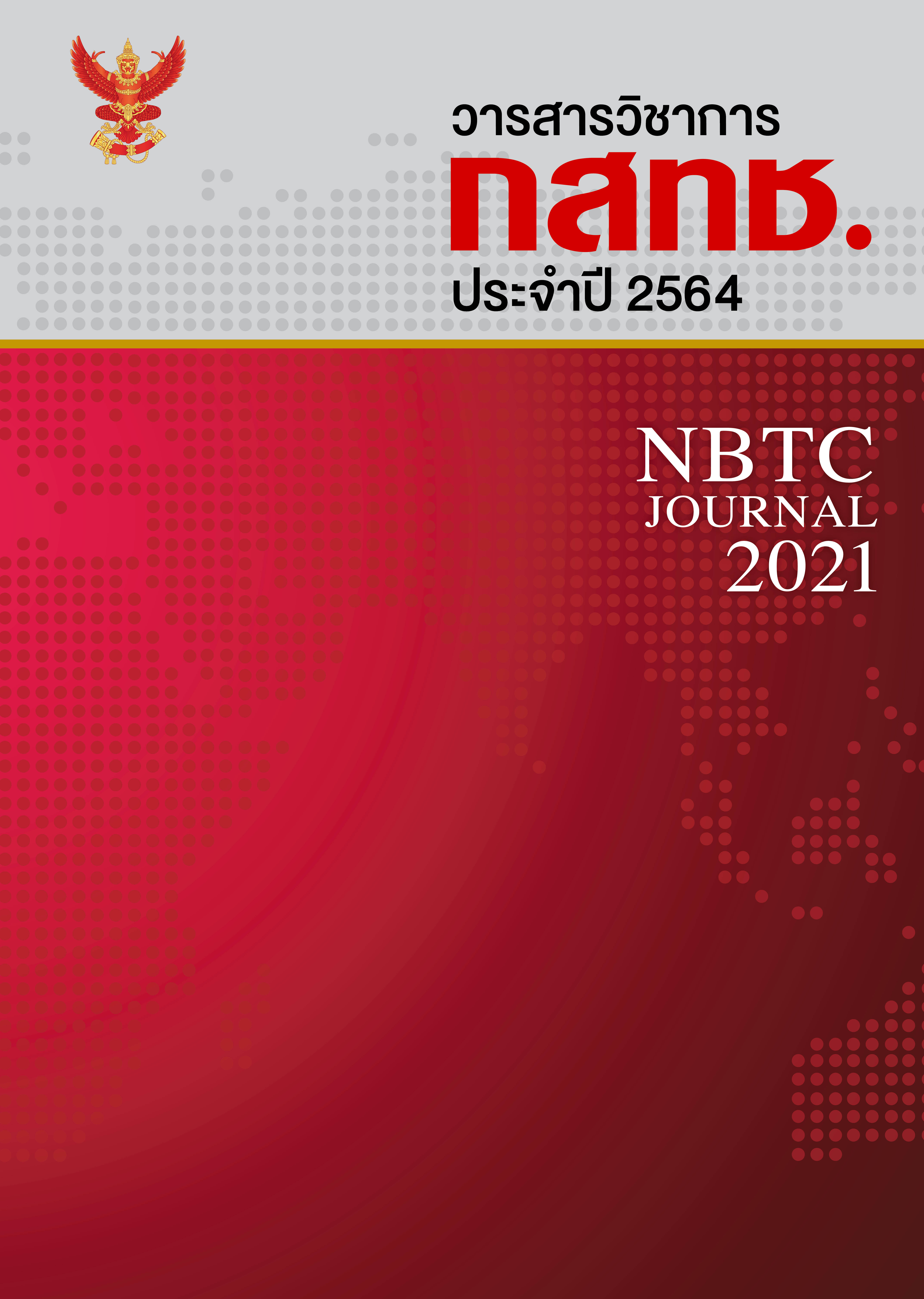A Study of Effects of Using ChooJai Artificial Intelligence Robot for Elderlies on Stress Level of Geriatric in Elderly Care Center : A Pilot Study
Keywords:
Robotics, Artificial Intelligence, Clinical Psychology, Music TherapyAbstract
“Choojai” Mental Health Assistive Robot for elderly care centre is an integration of artificial intelligence, robotics, clinical psychology, and music therapy. Choojai’s functions are Smart Hospital Application telemedicine memory - emotion and cognitive function screeningand Psychological Intervention Application. This pilot study aimed to examine the effects of using Choojai robot on the mental health of the elderly who reside in one nursing care in Bangkok. Quasi-Experimental, One Group Pretest - Posttest Design was employed to compare the score from the Thai Mental Health Questionnaire (TMHQ). Although not statistically significant, results reveal a reduction trend of somatization, depression, and anxiety scores. The results suggest benefits of using Choojai for mental health care in the elderly.
References
กรมกิจการผู้สูงอายุ. (2563, เมษายน). สถิติผู้สูงอายุผู้ใช้บริการภายในศูนย์พัฒนาการจัดสวัสดิการสังคมผู้สูงอายุ กรมกิจการผู้สูงอายุ. http://www.dop.go.th/th/know/side/1/1/293
ชมพูนุท พรหมภักดิ์. (2556). การเข้าสู่สังคมผู้สูงอายุของประเทศไทย (Aging Society in Thailand). กลุ่มงานวิจัย สำนักวิชาการ สำนักงานเลขาธิการวุฒิสภา.
บริบูรณ์ พรพิบูลย์. (2528). โลกยามชราและแนวการเตรียมตัวเพื่อเป็นสุข. พระสิงห์การพิมพ์.
พัชราภัณฑ์ ไชยสังข์, สิริกร สุธวัชณัฐชา, ปริมวิชญา อินต๊ะกัน, และสายใจ ลิชนะเธียร. (2013). ปัจจัยทำนาย ภาวะซึมเศร้าของผู้สูงอายุโรคเรื้อรังในเขตเมือง. วารสารการพยาบาลและการศึกษา, 6(1), 27-37.
มูลนิธิพัฒนางานผู้สูงอายุ. (2558, 19 มิถุนายน). สถานการณ์ผู้สูงอายุในประเทศไทย (ด้านประชากร). http:// fopdev.or.th/tag/สถานการณ์ผู้สูงอายุไทย
วิไลวรรณ ทองเจริญ. (2554). ศาสตร์และศิลป์การพยาบาลผู้สูงอายุ. โครงการตำราคณะพยาบาลศาสตร์ มหาวิทยาลัย มหิดล.
ศรีประภา ชัยสินธพ. (2559). สภาพจิตใจของผู้สูงอายุ. คณะแพทยศาสตร์โรงพยาบาลรามาธิบดี มหาวิทยาลัยมหิดล. https://med.mahidol.ac.th/ramamental/generalknowledge/general/0717 2014-1131.
สถานีพัฒนาสังคม. (2563, 19 มิถุนายน). ปัญหาการขาดแคลนบุคลากรที่มีความรู้และประสบการณ์ในการดูแลผู้สูงอายุ. สำนักงานเลขาธิการวุฒิสภา. http://www.senate.go.th/w3c/ senate/pictures/comm/1549/ file_1487905280.docx
สำนักงานสถิติแห่งชาติ กระทรวงเทคโนโลยีสารสนเทศและการสื่อสาร. (2563, 19 มิถุนายน). การสำรวจประชากรสูงอายุ ในประเทศไทย พ.ศ. 2557. หอสมุดคณะแพทยศาสตร์ จุฬาลงกรณ์มหาวิทยาลัย. http://library.md.chula. ac.th/guide/vancouver2011.pdf
Baker, F., Kennelly, J., & Tamplin, J. (2005). Themes in songs written by patients with traumatic brain injury: Differences across the lifespan. Australian Journal of Music Therapy, 16(2005), 25-42.
Bellaire, K., Yorkston, K. M., & Beukelman, D. R. (1986). Modification of breath patterning to increase naturalness of a mildly dysarthric speaker. Journal of Communication Disorders, 19(4), 271-280.
Dziechciaz, M., & Filip, R. (2014). Biological psychological and social determinants of old age: Bio- psycho-social aspects of human aging. Annals of Agricultural and Environmental Medicine, 21(4).
Dongilli, P. A., Jr. (1993). Semantic context and speech intelligibility [Doctoral dissertation]. The University of Nebraska-Lincoln.
Erdfelder, E., Faul, F., & Buchner, A. (1996). GPOWER: A general power analysis program. Behavior research methods, instruments, & computers, 28(1), 1-11.
Grocke, D., & Wigram, T. (2006). Receptive methods in music therapy: Techniques and clinical applications for music therapy clinicians, educators and students. Jessica Kingsley Publishers.
Hustad, K. C., Beukelman, D. R., & Yorkston, K. M. (1998). Functional outcome assessment in dysarthria. In Seminars in Speech and Language, 19(3), 291-302. Thieme Medical Publishers, Inc.
Levitin, D. J., & Tirovolas, A. K. (2009). Current advances in the cognitive neuroscience of music. Annals of the New York Academy of Sciences, 1156(1), 211-231.
Meaney, A. M., Croke, M., & Kirby, M. (2005). Needs assessment in dementia. International Journal of Geriatric Psychiatry: A journal of the psychiatry of late life and allied sciences, 20(4), 322-329.
Monchai. (2560, 8 กุมภาพันธ์). องค์การอนามัยโลก ประเมิน ปี 2583 ประเทศไทยจะมีจำนวนผู้สูงอายุมากที่สุดในโลก. Oknation.net. http://oknation.nationtv.tv/blog/monchai83/2017/02/08/entry-1
Phattharayuttawat, S., Ngamthipwattana, T., & Sukhatungkha, K. (1999). The norm profile for “The Thai Mental Health Questionnaire”. Age (year), 15(20), 212.
Pilon, M. A., McIntosh, K. W., & Thaut, M. H. (1998). Auditory vs visual speech timing cues as external rate control to enhance verbal intelligibility in mixed spastic ataxic dysarthric speakers: a pilot study. Brain injury, 12(9), 793-803.
Rodriguez-Fornells, A., Kramer, U., Lorenzo-Seva, U., Festman, J., & Münte, T. F. (2012). Self-assessment of individual differences in language switching. Frontiers in Psychology, 2, 388.
Tamplin, J. (2008). A pilot study into the effect of vocal exercises and singing on dysarthric speech. NeuroRehabilitation, 23(3), 207-216.
Train the Brain Forum Committee. (1993). Thai mental state examination (TMSE). Siriraj Hospital
Weller, C. M., & Baker, F. A. (2011). The role of music therapy in physical rehabilitation: a systematic literature review. Nordic Journal of Music Therapy, 20(1), 43-61.
Wolfe, D. E. (1983). Effects of music loudness on task performance and self-report of college-aged students. Journal of Research in Music Education, 31(3), 191-201.
World Health Organization. (2001). Men, ageing and health: Achieving health across the life span (No. WHO/NMH/NPH/01.2). World Health Organization.
Downloads
Published
How to Cite
Issue
Section
License
The Office of the NBTC holds the copyright of articles appearing in the journal. The Office of the NBTC allows the public or individuals to distribute, copy, or republish the work under a Creative Commons license (CC), with attribution (BY), No Derivatives (ND) and NonCommercial (NC); unless written permission is received from the Office of the NBTC.
Text, tables, and figures that appear in articles accepted for publication in this journal are personal opinion and responsibility of the author, and not binding on the NBTC and the Office of the NBTC. In case of errors, each author is solely responsible for their own article, and not concerning the NBTC and the NBTC Office in any way.



